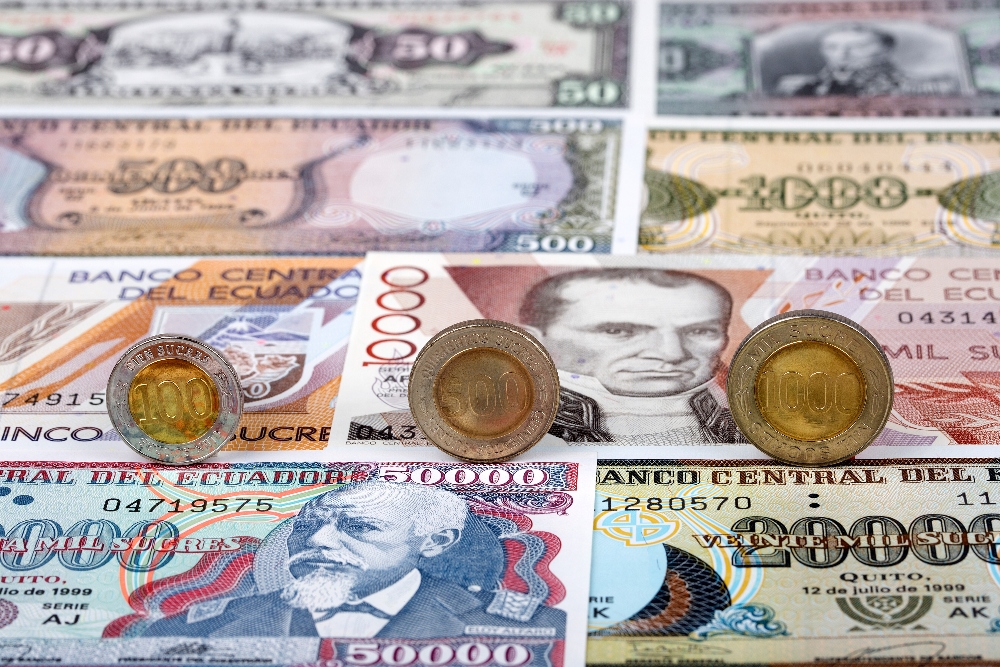Ecuador’s annual inflation rate rose to 1.57% in July 2024, rebounding from a nearly three-year low of 1.18% in June, according to data from the Instituto Nacional de Estadística y Censos.
This shift highlights significant pricing swings across various sectors, each impacting the country’s economic landscape differently.
Inflation trends across different sectors
Housing and utilities drive inflation
The primary driver of the inflation increase was a substantial rise in housing and utility prices. In July, this sector saw a significant increase of 0.29%, a sharp reversal from the -8.04% decline observed in June. This rebound indicates a swift price recovery in this crucial area.
Transportation costs climb
Transportation also played a significant role in the inflation surge, with prices rising by 3.60% in July, up from 2.77% the previous month. This increase underscores the growing cost dynamics in the transportation sector, adding further pressure on overall inflation.
Clothing and footwear: slowing decline
While prices for clothing and footwear continued to fall, the rate of decline slowed considerably in July. The sector experienced a minor reduction of -0.41%, compared to a -1.29% decline in June, reflecting a moderate downward trend in apparel and footwear pricing.
Education and food prices
In contrast, some sectors exhibited different inflation patterns. Education prices fell at a slower rate (1.73% vs. 1.87%), and food and non-alcoholic beverages saw a modest price increase (0.37% vs. 2.28%), indicating nuanced price fluctuations across these segments.
Monthly, Ecuador’s consumer prices fell by 0.93% in July, slightly less than the 0.95% reduction reported in June. This modest adjustment in monthly price patterns reflects the ongoing interaction of demand-supply dynamics and external factors influencing Ecuador’s pricing ecosystem.
Comparing Ecuador’s inflation trends with neighboring economies
Colombia
Colombia, which typically experiences higher inflation rates than Ecuador, continues to grapple with inflation levels that exceed central bank targets. This is driven by factors such as commodity price volatility and currency fluctuations.
Peru
Peru faces challenges in maintaining inflation within the central bank’s target range, influenced by food prices, exchange rate variations, and government policies. This economic narrative contrasts with Ecuador’s recent inflation acceleration, highlighting differences in economic structures and policy responses.
Brazil
Brazil, known for its high inflation rates, has implemented various measures over the years, including monetary policy adjustments and fiscal reforms, to control inflation. These efforts are influenced by interest rates, exchange rate fluctuations, and government interventions. Ecuador’s current inflation trajectory presents contrasting economic conditions compared to Brazil’s policies and challenges.
Chile
Chile maintains relatively stable inflation rates, supported by a robust inflation-targeting framework overseen by its central bank. However, inflation in Chile rose slightly for the third consecutive month, reaching 4.2% in June.
This contrasts with Ecuador’s recent inflation surge, reflecting different economic dynamics.
Comparative analyses of countries like Colombia, Peru, Brazil, and Chile underscore the intricate economic dynamics influenced by internal and external factors.
Understanding these nuances provides valuable insights into the economic resilience and challenges faced by individual countries within the Latin American context.
Ecuador’s inflation scenario in July 2024 depicts a diverse tapestry of pricing swings across key industries, highlighting the complex interplay of supply, demand, and external factors that shape the country’s economic indices.
As Ecuador navigates these shifting price dynamics, a nuanced understanding of sectoral changes and their broader implications is essential to accurately predict the country’s economic trajectory.
The post Ecuador’s inflation rebounds in July amid sectoral price swings appeared first on Invezz
